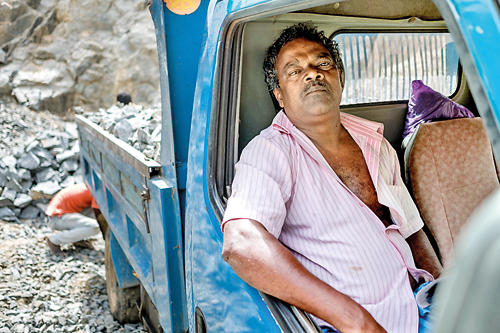The one that got away – Munira Mutaher
Having gotten used to borrowing her rowing partner’s camera out on the 4 a.m. lake – ‘taking pictures not-so-seriously for a long time’ – the young(er) Munira Mutaher finally got her hands on her own camera just before she started university. She studied journalism (MONASH, Malaysia), and there worked on the student newspaper, as part of the editorial team.
Back in Sri Lanka she became a founder member of both Roar Media and Colombo Design Market, before shifting away into the non-profit/development sector. In 2016 she was offered the chance to work with Sarah Kabir on Voices of Peace, a two-year, in-depth collaboration, interviewing and photographing ex-Sri Lankan military and LTTE personnel.
Since then, she has predominantly worked for GIZ, Germany’s international development body, on the Archive of Memory initiative, part of their reconciliation programme. She has also been involved with the new Travelling History Museum.
Before the lockdown, Mutaher spent time in the Mountain Province of the Philippines, assisting an anthropological research project; and in March she was selected for a 14-day intensive Goethe-Institut trip round museums, studios and exhibits in Germany and Switzerland. Her photographs were most recently part of the ‘Humanity & Earth’ group exhibition at the Harold Peiris Gallery.
The one that got away
‘For me, missed images usually happen when I’m travelling with a group of people, and can’t ask them to stop every five seconds, so in my head I’m thinking, “Mental image! Mental image!” I’m really bad at just blocking that off and telling myself that I’m not on an assignment right now, so just enjoy the drive.
In 2006, my family went on a part-holiday, part-pilgrimage to Yemen. We’d bought one of those basic family-trip Olympus pocket cameras, and basically it just didn’t function. You would take a couple of photos, and then at some point, whenever it felt like it, it would suddenly corrupt and you’d lose all the photographs. So now we’re in Yemen, and we have this camera that’s just serving no purpose. We were taking all these pictures, and it was fun, but you’d never get to see them, so…
Then I remember we were in a bus one day, on a long-distance drive from one town to another, and I was looking out of the window, just watching the scenery go by, and then suddenly there was this lady, dressed head to toe in an abaya. The abaya is black, and in Yemen, between the towns, the terrain is really just barren, rocks, shades of brown and earth: so you see this very stark, black silhouette… and she’s just rolling this gigantic tyre along the side of the road.
The thing is, I don’t remember if I ever actually took that picture with the camera, or if I just took it in my mind. Either way, I still would not have had it now. But I’ve revisited that picture a lot. And I do remember, in that moment, realising I had started seeing things in ‘frames’, looking at ‘images’, and thinking about how I’d take a ‘shot’. I think that was probably pretty much the point I got into photography.’
The shot that she got
‘As part of the ‘Humanity & Earth’ project, we visited Dr Ranil Senanayake’s analog forestry project, in Belipola. Everything there is organic, an entire model forest based on avoiding unsustainable relationships with our environment – and then right round the corner, a short walk down the road, is this huge open-cast granite quarry! Big trucks going up and down all day.
I convinced one of the local women who worked at the project to go with me and take a look, but she was very nervous about it: she had never gone beyond this point in the road. So we go in, and it’s this really tough, gritty environment, all these men hard at work, the scale of the whole thing – and then you’re there, this girl with a camera.
Obviously the workmen want to know what you are doing there. But I was also feeling a bit bold – maybe they didn’t want people seeing what they were doing here, maybe it was illegal; but I didn’t feel like we would come to any harm – and I wanted to test out how this situation would unfold.
Whenever you get groups of people – especially young men – they tend to get a bit excited and say, “Take my picture! Take my picture!” Almost like they’re teasing you. They see a young girl and they think they can just play the fool. But that can be fun (and also you can get a lot of pictures) – so I just went along with it, responding to them, and then one guy said, “Why don’t you take a picture of me?”
The truck is being loaded, and this guy’s in the driver’s seat, with one arm out of the window: acting like a real pandit, because he felt entirely in charge. He probably expected me to just shyly click because he asked me to. But instead I really got into it, moving around and looking serious – and so the dynamic suddenly changed. He became really friendly, we started chatting, and I stayed there for at least another hour.
When I took the photo I’d thought I was just humouring him. But actually this is one of the times I’ve felt I got the picture right, in the process as well as in the final outcome. It became a much more genuine interaction, and so more importantly it didn’t feel extractive. And then I checked my photos at the end of the day, and I thought, “You know what, that’s a good picture.”’

‘One-arm pandit’ by Munira Mutaher


